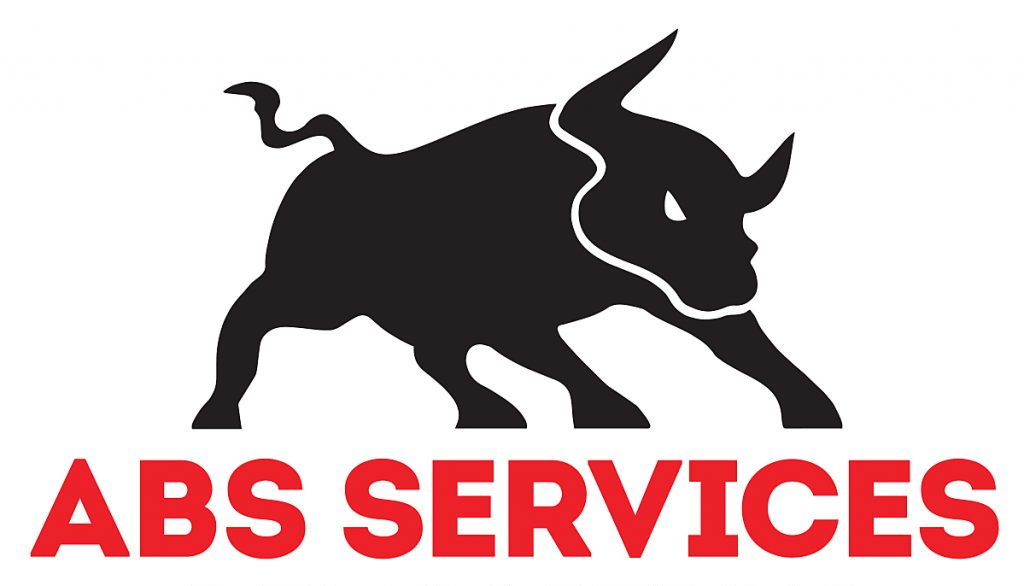 Investing in commercial property presents a wealth of opportunities, but maximizing return on investment (ROI) requires strategic planning and execution. With the right improvements and management practices, property owners can significantly enhance their asset’s value and appeal to potential tenants. This article outlines effective strategies for maximizing ROI through smart investments in commercial property improvements.
Investing in commercial property presents a wealth of opportunities, but maximizing return on investment (ROI) requires strategic planning and execution. With the right improvements and management practices, property owners can significantly enhance their asset’s value and appeal to potential tenants. This article outlines effective strategies for maximizing ROI through smart investments in commercial property improvements.
Understanding the Importance of ROI in Commercial Real Estate
Maximizing ROI is crucial for commercial property investors, as it directly impacts the long-term profitability of their investments. ROI measures the efficiency of an investment and helps owners make informed decisions about property management and improvements.
The Significance of ROI
-
- Financial Health: A strong ROI indicates a healthy financial position, allowing property owners to reinvest profits into further enhancements or new acquisitions.
- Market Competitiveness: Properties with high ROI tend to attract better tenants and maintain lower vacancy rates, enhancing overall market competitiveness.
- Investment Appeal: Investors are more likely to pursue properties with proven high returns, making it essential for owners to focus on strategies that elevate ROI.
Key Factors Influencing ROI
Several factors influence the potential ROI of a commercial property:
-
- Location: Properties situated in high-demand areas typically command higher rental rates and attract quality tenants.
- Market Trends: Understanding local market dynamics, including supply and demand, can help investors make informed decisions about property enhancements.
- Tenant Satisfaction: Happy tenants are more likely to renew leases, reducing turnover costs and stabilizing income streams.
Conducting Comprehensive Market Research
Before making any improvements, it is essential to conduct thorough market research. This process helps property owners identify trends, opportunities, and potential risks associated with their investments.
Analyzing Economic Indicators
Monitoring local economic conditions is vital for understanding market dynamics. Key indicators include:
-
- Employment Rates: High employment rates can lead to increased demand for commercial spaces.
- GDP Growth: A growing economy often correlates with rising property values and rental rates.
Assessing Supply and Demand
Understanding the balance between supply and demand for different types of commercial properties is crucial. Factors to consider include:
-
- Current Inventory: Evaluate the existing supply of commercial properties in the area.
- Future Developments: Anticipate upcoming projects that may impact demand, such as new infrastructure or commercial developments.
Identifying Tenant Profiles
Understanding the needs and preferences of potential tenants can guide property improvements. Key considerations include:
-
- Industry Trends: Different industries have unique space requirements and preferences.
- Demographic Insights: Tailoring properties to meet the demands of specific demographics can enhance tenant attraction and retention.
Choosing the Right Property Type
Different types of commercial properties offer varying levels of risk and return. Investors should carefully consider which type aligns with their investment goals.
Common Property Types
-
- Office Buildings: Typically stable investments, providing long-term leases and predictable income.
- Retail Spaces: Can offer high returns but may be more susceptible to market fluctuations and changes in consumer behavior.
- Industrial Properties: Often have lower vacancy rates and stable demand, making them attractive for long-term investment.
Location Considerations
Selecting a prime location can significantly impact ROI. Factors to evaluate include:
-
- Accessibility: Proximity to major transportation hubs can enhance tenant appeal.
- Foot Traffic: High foot traffic areas tend to attract more customers, particularly for retail properties.
Implementing Value-Adding Improvements
Investing in property enhancements can significantly boost ROI. Focus on improvements that add tangible value and appeal to tenants.
Prioritizing Key Upgrades
-
- Curb Appeal: Enhancing the exterior of a property can attract tenants and justify higher rental rates.
- Energy Efficiency: Implementing energy-efficient upgrades, such as LED lighting and HVAC systems, can reduce operating costs and attract eco-conscious tenants.
Engaging Professional Contractors
Partnering with experienced contractors can ensure that renovations are executed efficiently and within budget. Look for contractors with a proven track record in commercial renovations to maximize the impact of investments.
Tailoring Improvements to Tenant Needs
Understanding tenant preferences is essential when planning renovations. Consider the following:
-
- Flexible Workspaces: Modern tenants often seek adaptable spaces that can accommodate changing needs.
- Technology Integration: Incorporating smart technology can enhance tenant experience and improve property functionality.
Fostering Tenant Satisfaction
Tenant satisfaction is a critical component of maximizing ROI. Happy tenants are more likely to renew leases, reducing turnover costs and stabilizing income streams.
Building Strong Tenant Relationships
-
- Open Communication: Maintain clear lines of communication with tenants to address concerns promptly.
- Responsive Management: Demonstrating a commitment to tenant needs fosters loyalty and encourages long-term occupancy.
Creating a Positive Tenant Experience
-
- Amenities: Providing desirable amenities, such as fitness centers or communal spaces, can enhance tenant satisfaction.
- Events and Engagement: Hosting tenant appreciation events can strengthen community bonds and encourage positive referrals.
Diversifying Tenant Mix
A diverse tenant mix can mitigate risks and enhance overall returns. By leasing to a variety of businesses, property owners can reduce reliance on a single sector.
Benefits of a Diverse Tenant Base
-
- Stability: A varied tenant mix helps cushion against market fluctuations and economic downturns.
- Increased Exposure: Attracting different types of businesses can enhance the property’s visibility and appeal.
Strategies for Tenant Diversification
-
- Targeting Multiple Industries: Seek tenants from various sectors to create a balanced portfolio.
- Flexible Leasing Options: Offering flexible lease terms can attract a wider range of tenants, from startups to established corporations.
Leveraging Financial Strategies
Smart financial management is essential for maximizing ROI. Consider various financing options and strategies to enhance cash flow and investment value.
Exploring Financing Options
-
- Traditional Loans: Bank loans often offer competitive interest rates and favorable terms for commercial properties.
- SBA Loans: Small Business Administration loans can provide lower down payments and longer repayment periods, making them attractive for property acquisitions.
Utilizing Tax Strategies
Effective tax planning can enhance ROI by reducing taxable income. Consider the following strategies:
-
- Depreciation: Taking advantage of depreciation deductions can significantly lower tax liabilities.
- 1031 Exchanges: Utilizing 1031 exchanges allows investors to defer capital gains taxes when reinvesting in similar properties.
Embracing Sustainability Practices
Incorporating sustainable practices into commercial properties is becoming increasingly important. Green buildings not only benefit the environment but also enhance property value and attract tenants.
Benefits of Green Building Practices
-
- Increased Property Value: Research indicates that green-certified buildings can see their value rise by 7% to 18%.
- Attracting Eco-Conscious Tenants: Properties with sustainable features appeal to tenants who prioritize environmental responsibility.
Implementing Green Upgrades
-
- Energy-Efficient Systems: Upgrading to energy-efficient HVAC systems and lighting can reduce operating costs and enhance tenant satisfaction.
- Water Conservation: Installing low-flow fixtures and rainwater harvesting systems can further improve sustainability.
Utilizing Technology for Property Management
Embracing technology can streamline operations, enhance tenant experience, and improve decision-making.
Implementing Property Management Software
-
- Automation: Property management software can automate tasks, such as lease management and maintenance requests, improving efficiency.
- Data Analytics: Utilizing data analytics tools can provide valuable insights into market trends, tenant behavior, and property performance.
Enhancing Tenant Communication
-
- Online Portals: Providing tenants with online portals for communication and maintenance requests can improve satisfaction and responsiveness.
- Virtual Tours: Offering virtual tours can attract potential tenants and streamline the leasing process.
Monitoring Performance Metrics
Regularly monitoring key performance metrics is essential for assessing the health of commercial property investments.
Key Metrics to Track
-
- Occupancy Rate: A high occupancy rate indicates strong demand and stable income.
- Net Operating Income (NOI): Calculating NOI helps assess the property’s profitability by subtracting operating expenses from gross rental income.
Adjusting Strategies Based on Metrics
-
- Identifying Trends: Monitoring performance metrics allows property owners to identify trends and adjust strategies accordingly.
- Setting Goals: Establishing performance benchmarks can help guide decision-making and improve overall investment performance.
Planning for Exit Strategies
Having a clear exit strategy is essential for maximizing ROI. Consider various options for exiting an investment.
Potential Exit Strategies
-
- Selling at Peak Value: Monitor market conditions and sell properties when they reach peak value for maximum returns.
- Refinancing: Refinancing properties can free up capital for new investments or reduce interest burdens.
Long-Term vs. Short-Term Strategies
-
- Holding for Appreciation: Some investors may choose to hold properties for long-term capital appreciation while generating rental income.
- Flipping Properties: For those seeking quicker returns, flipping properties after renovations can yield substantial profits.
Building Professional Relationships
Establishing strong relationships with industry professionals can enhance investment strategies and provide valuable insights.
Collaborating with Experts
-
- Real Estate Brokers: Working with experienced commercial real estate brokers can help investors identify lucrative opportunities and avoid common pitfalls.
- Property Managers: Engaging professional property managers can streamline operations and enhance tenant satisfaction.
Networking Opportunities
-
- Industry Events: Attending industry conferences and networking events can provide access to valuable resources and connections.
- Professional Organizations: Joining professional organizations can help investors stay informed about market trends and best practices.
We Provide Commercial General Contracting Services
We oversee construction projects from the beginning to the end. This includes designing, planning, building, and managing the entire process. We are responsible for coordinating with architects, engineers, and other subcontractors to ensure that the project is completed within the set timeline and budget.
> Learn More
Maximizing ROI in commercial property investments requires a multifaceted approach that combines strategic planning, effective management, and continuous adaptation to market conditions. By conducting thorough market research, implementing value-adding improvements, fostering tenant satisfaction, and leveraging financial strategies, property owners can enhance their investments and achieve sustained success in the competitive commercial real estate landscape. Embracing sustainability practices and utilizing technology further positions investors for long-term profitability. With careful planning and execution, the potential for significant returns on commercial property investments is within reach.
Contact us (513-617-1401) for more information or a quote
—

About ABS Services
ABS Services provides comprehensive commercial construction services to Greater Cincinnati, Northern Kentucky, and Southeast Indiana. We have the experience, equipment, and the right team to get the job done!
> Learn More
